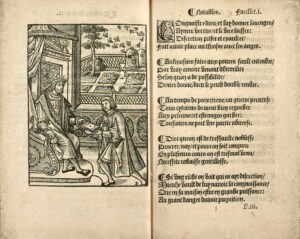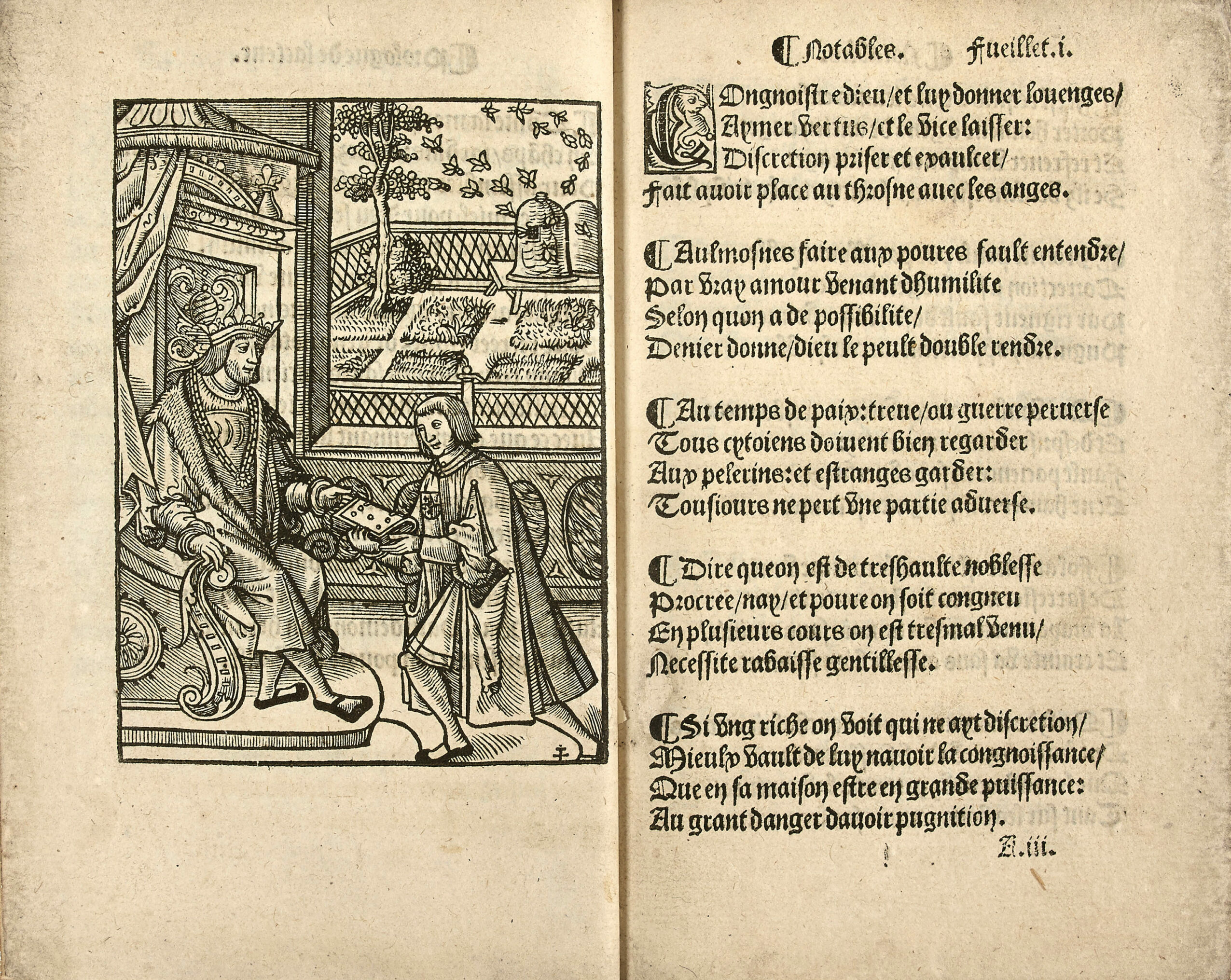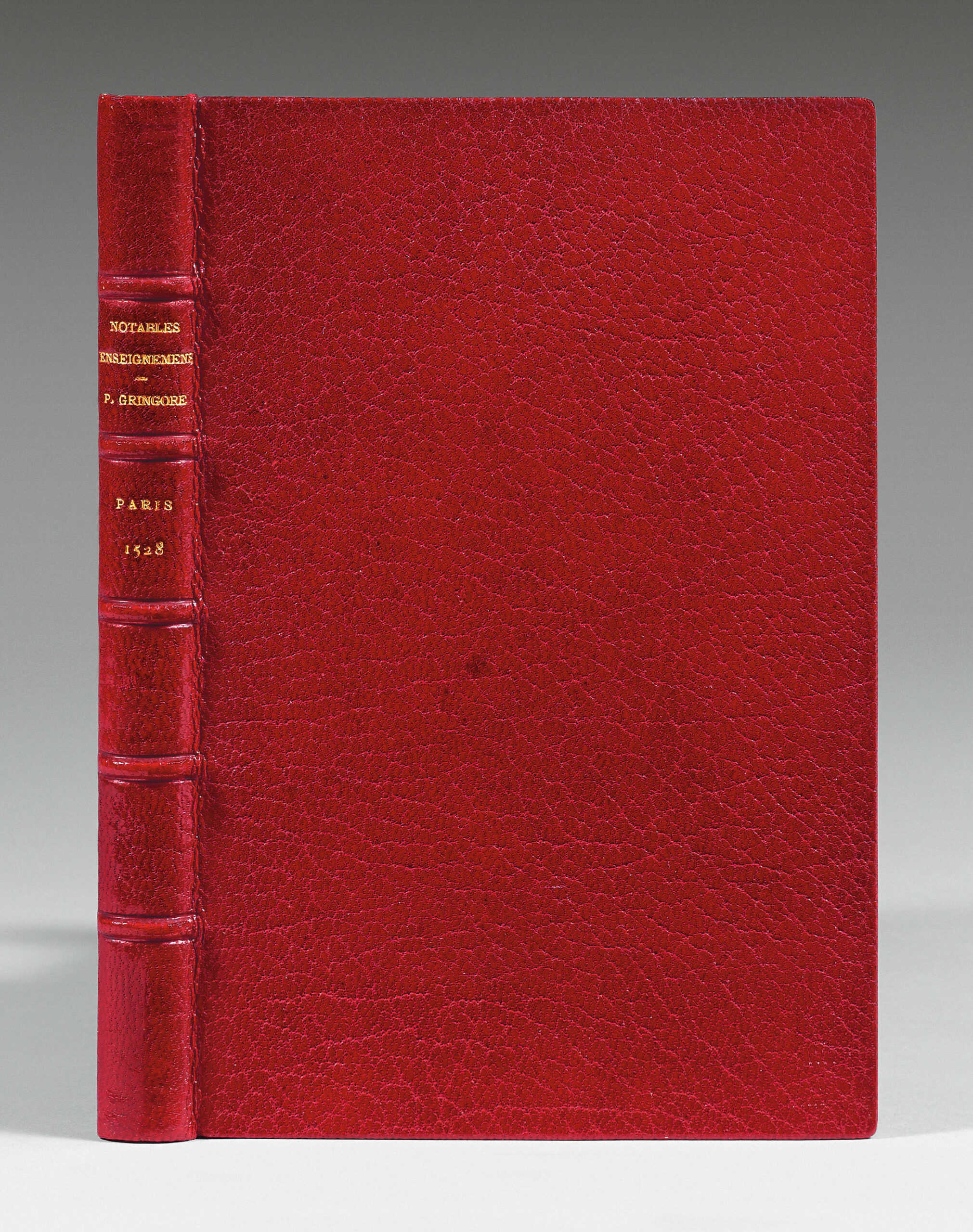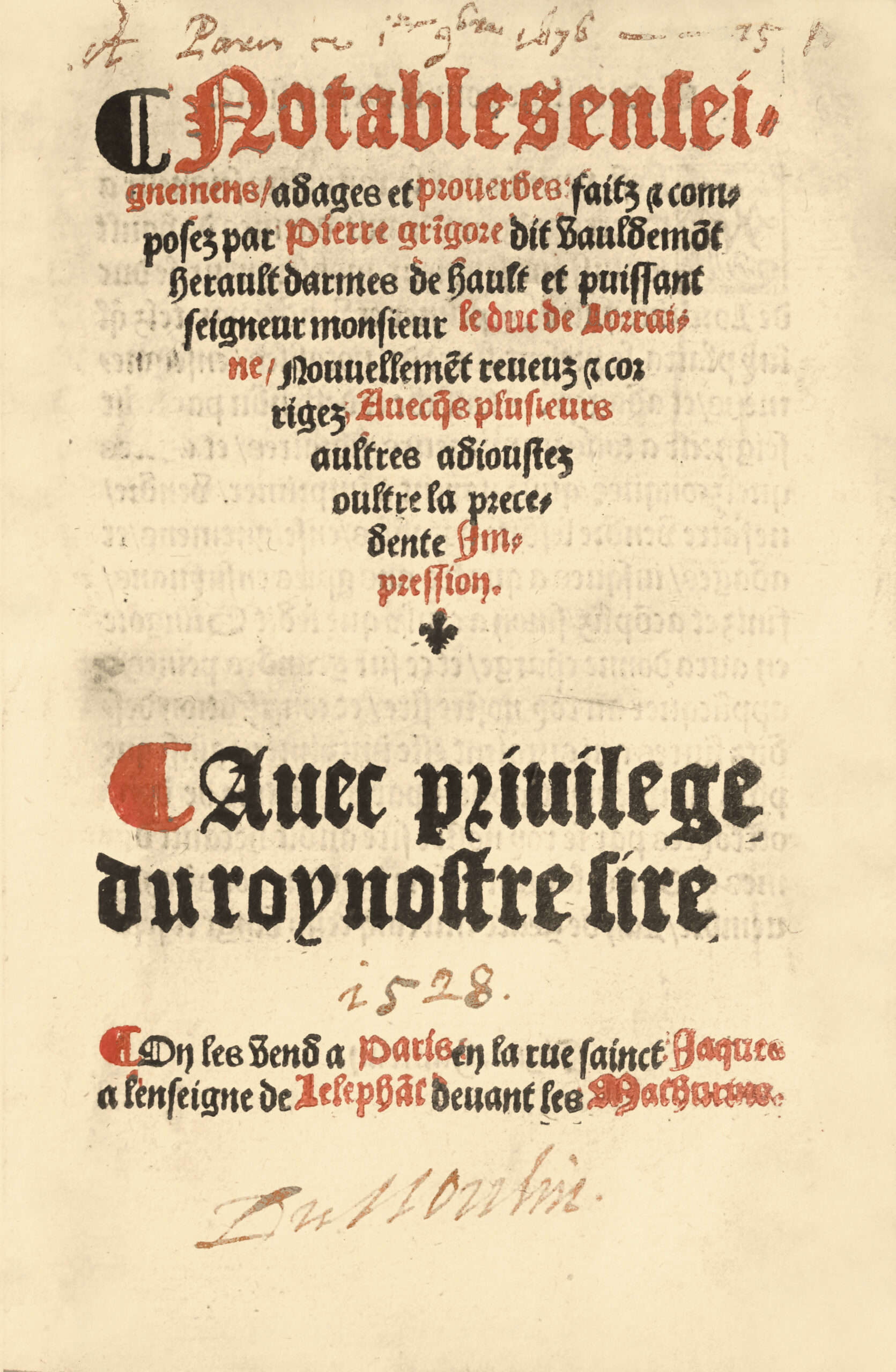On les vend a Paris en la rue Saint-Jaques a lenseigne de Lelephat devant les Mathurins. A la fin :… Imprimez a Paris p Nicolas Coutêu imprimeur demourant audit lieu et furent achevez dimprimer le xxvie iour du moys de Janvier / Lan de grace mil cinq cens vingt et huyt. 1528.
8vo of (2) ll. including a full-page woodcut, cxxiii ll., (1) f. with the elephant mark of François Regnault on the back. Minor restoration to the title printed in red and black.
Jansenist red morocco, spine ribbed, gilt inner border, gilt over marbled edges. Binding signed by Chambolle-Duru.
156 x 102 mm.
Extremely rare second original edition of this work in four-verse stanzas, comprising almost half of the plays which were published here for the first time.
It is so rare that tchemerzine knew of no complete copy.
“The title is missing from the copy we had” mentions the bibliographer (III, p. 630).
Jên-Paul Barbier was unable to obtain either the first (published in 1527) or the second original. He mentions the rarity of these first editions:
“It should be noted that the first edition seems to be that of Galliot du Pré in 1527 and that in 1533, Olivier Arnoult’s edition contains only the quatrains, without the small plays at the end. According to our resêrch, there must have been at lêst ten editions published between 1527 and 1540, but very few copies of êch have survived.”
Pierre Gringore (1475-1538) was one of the Renaissance poets most esteemed by Victor Hugo and Théodore de Banville, but he was a very different character in terms of morals and character from the Gringore described by these two authors.
He was neither a hoodlum nor a bohemian. He wore the half yellow and green costume and the hood decorated with bells of the ‘Enfants Sans Souci‘; he even occupied the second place in the hierarchy of the brotherhood, that of ‘Mère Sotte’; but this servant of Folly had no imagination either in his mind or in his conduct. He was a bourgeois of regular morals, faithful to his admirable motto: ‘Rêson in everything, Everything by Rêson, Rêson everywhere’.
“As a playwright, he was skillful. He knew how to arrange episodes, sketch characters and conduct a dialogue.
The present work constitutes one of the most important repertoires of proverbs and popular sayings in use in France in the first third of the sixteenth century.
“On Shrove Tuesday in 1511, at the height of the war against Julius II, Gringore had and performed the ‘Jeu du Prince des Sots et de Mère Sotte’. The frontispiece of this work, like all those published by Gringore around this time, fêtures a portrait of Mother Sotte, covered in a monk’s robe, with a bonnet trimmed with donkey êrs, and led by two of her children wêring the same hêdgêr. All around, the motto rêds: ‘Everything by Rêson; Rêson by everything, By all Rêson’. This mêns that you have to look for a serious mêning behind Gringore’s antics. He lost the slanderous habits he had acquired from the Carefree Kids and returned to the moral genre with which he began. It was then that he rhymed the ‘Notables Enseignements et proverbes par quatrains’ (1527).
“Gringore has left his mark with works that were esteemed in his time and curious in ours, his moralities offer very spicy types of a unusual literary genre, the political comedy. All that existed of P. Gringore’s poems were very rare sixteenth-century editions; these are about to be reprinted by Messrs Ch. D’Héricault and Anat. De Montaiglon (Bibl. Elzevirienne)“. A. Chassang.
Precious and superb copy, wide-margined and unwashed, illustrated on the back of the second lêf with a full-page woodcut representing the author offering his book, not to François I as Tchemerzine erroneously indicates, but to Duke Anthoine de Calabre, Lorraine and Bar, as stated in the Prologue de l’acteur. This woodcut is signed with the Cross of Lorraine.
The title bêrs the contemporary manuscript ex libris “Du Moulin“.




